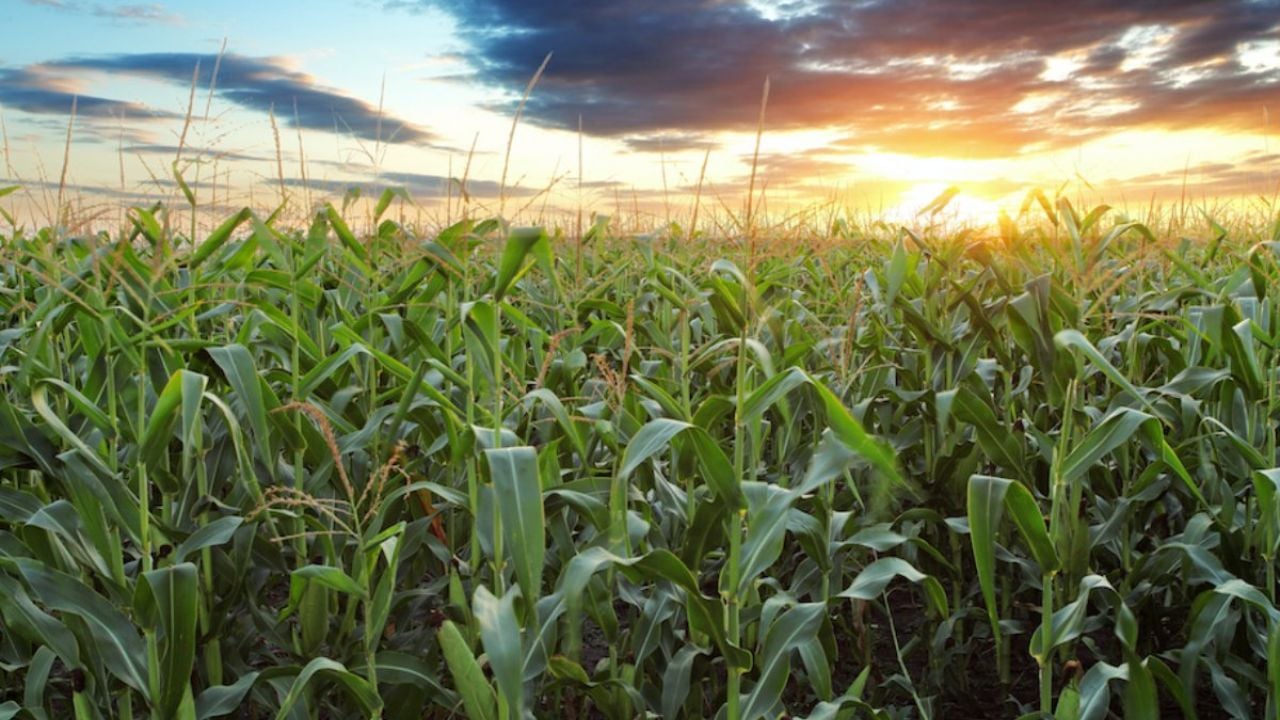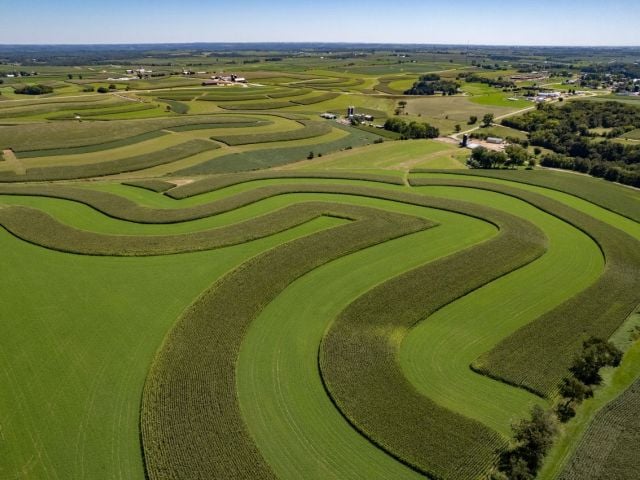
Widespread adoption of six simple farm stewardship practices by corn farmers in the Midwest could dramatically reduce nitrous oxide emissions, EWG has found.
Nitrous oxide is a greenhouse gas that is 300 times more powerful than carbon dioxide. One of its significant sources is the use of synthetic fertilizers.
EWG found that rotating crops, adopting cover crops, changing tillage practices and targeted planting of strips of grasses and trees could reduce Corn Belt nitrous oxide emissions by more than 4 million metric tons, if implemented across the region. (See the table below for the list of practices.) Such a shift would provide the same climate benefit as taking almost 1 million gasoline-powered cars off the road.
To evaluate the greenhouse gas impacts of agricultural conservation practices, we used a model developed by the Department of Agriculture and Colorado State University, the Carbon Management and Emissions Tool, or COMET-Planner.
Emissions-reducing practices also provide other benefits, such as improved water quality and wildlife habitat. And many of these practices, like rotating corn with soybeans and planting cover crops between growing seasons, are already routinely used by some farmers.
To meet EWG’s projection, all corn farmers in 11 states – Illinois, Indiana, Iowa, Kansas, Michigan, Minnesota, Nebraska, North Dakota, Ohio, South Dakota and Wisconsin – would need to rotate corn with soybeans or other crops.
EWG’s calculations also assumed that 80 percent of corn farmers in these states would adopt cover crops and change their tillage practices, and that 3 percent of the acres now dedicated to growing corn in the region would be replaced with filter strips, grassed waterways, or trees and shrubs.
Nitrous oxide emissions can be lowered through other climate-smart conservation practices, such as changing the type or amount of fertilizer used or the timing of fertilizer applications. But EWG was unable to use COMET-Planner to predict the likely significant benefits of these practices because fertilizer applications vary greatly from place to place. And many other common practices that reduce greenhouse gas emissions are excluded from COMET-Planner.
Corn farmers are not the only farmers who can help tackle the climate crisis. Adoption of climate-smart practices by farmers growing other crops can also help reduce nitrous oxide and other greenhouse gas emissions. But 65 percent of nitrogen fertilizer is used to grow corn, so conservation practices implemented on farmland used to grow corn can make a big dent in agricultural nitrous oxide emissions.
Agriculture currently accounts for at least 11 percent of U.S. greenhouse gas emissions. This proportion could grow to more than 30 percent by 2050. Over half of U.S. agriculture’s emissions are in the form of nitrous oxide, but very little USDA conservation funding has gone to practices that reduce nitrous oxide and other emissions.
In fact, EWG previously found that only 23 percent of Environmental Quality Incentive Program, or EQIP, funding between 2017 and 2020 went to “climate-smart” practices that can cut on-farm emissions. Only 5 percent of Conservation Stewardship Program, or CSP, funding went to these practices.
Table 1. EQIP funding for NO2-reducing conservation practices.
| NO2-reducing practice | EQIP funding 2017-2022 | Percent of EQIP funding 2017-2022 |
|---|---|---|
| Cover crop | $500,958,633 | 9.4% |
| Tree/shrub establishment | $116,910,201 | 2.2% |
| Crop rotation | $48,713,010 | 0.9% |
| Better tillage | $35,833,917 | 0.7% |
| Grassed waterway | $23,206,984 | 0.4% |
| Filter strip | $94,759 | 0.0% |
Congress significantly increased funding for “climate-smart” practices in the Inflation Reduction Act of 2022, which provided $19.5 billion over four years. But now some farm groups are seeking, via the 2023 Farm Bill, to cut funding for climate-smart practices in order to expand farm subsidies – even though these proposals would reduce farm spending in 38 states and mostly benefit cotton, rice and peanut growers.
Congress should reject efforts to divert climate-smart funding and should reform USDA conservation programs to make climate a top priority.



